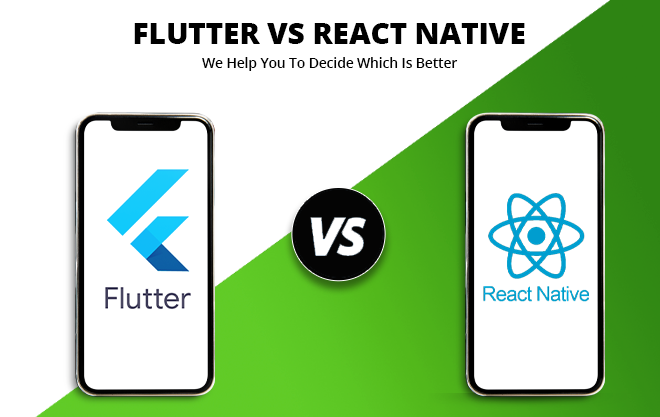Are you comparing Flutter vs React Native performance? Learn how these two vary and what advantages and disadvantages each how to avail best React Native Development service. Although it is initially difficult to tell, cross-platform mobile applications are less competitive in graphic animation. Simultaneously, they are cost-efficient and might work exceptionally well for startups. In 2015, Facebook was the first major player to introduce React Native. The cross-platforming development came to pass: once the code is written, native designs are produced. The next significant occasion took place in 2017. Flutter, a programming language based on Dart, was introduced by Google.
What is Flutter?
Flutter is a UI toolkit for building natively built mobile, web, and desktop applications that are quick and beautiful. It uses a single programming language and a single codebase to create the app. It is open-source and free. It was created by Google in May 2017 and is now governed by an ECMA standard. The mobile framework Flutter uses the Dart programming language to create apps. Dart can be trans-compiled into JavaScript code and shares capabilities with other programming languages like Kotlin and Swift. Flutter is primarily designed for 2D iOS and Android mobile apps. We can also create fully functional apps with access to cameras, storage, network, third-party SDKs, and more.
Who Invented Flutter?
A Google team created a flutter. But because it’s an open-source project, Google and the Flutter communities work on it.
Features of Flutter
Flutter provides easy-to-follow instructions for creating stunning desktop and mobile apps with detailed material designs and widgets. The following list of Flutter’s key attributes includes:
- Open-Source
- Cross-platform development
- Hot Reload
- Accessible Native Features
- Accessible Native Features
- Minimal code
- Widgets
Pros & Cons of Flutter
Flutter has some benefits and drawbacks, just like any other framework now in use, and the choice of which framework to employ is always up to the developer. The following benefits of this framework include
Pros:
Let’s start with the benefits that make Flutter the best developer choice. The advantages of Flutter over React Native are as follows:
- It looks fantastic!
- It is abundant in widgets, and the community is expanding quickly.
- Organized documentation
- Permanent web development advancements demand fewer tests
- The apps load quickly
- Making the same UI for older devices is beneficial.
- Flutter 2 aids in creating web applications!
Cons:
Although Flutter has a long list of benefits, it is still essential to consider some drawbacks.
- It isn’t native
- The importance of the apps outweighs that of the native ones.
- Compared to native programs, it still has a small selection of tools and libraries.
These drawbacks are negligible and have no impact on the creation of apps. The limitations of Flutter, however, can, in some circumstances, be the deciding factor when selecting a cross-platform development framework.
Popular Apps Made Using Flutter By MMF InfoTech’s


What is React Native?
Facebook created the open-source JavaScript framework known as React Native. It creates organic, native mobile applications for the Android and iOS operating systems. With the help of a single codebase, mobile apps may be made using this JavaScript framework, which expands on the React library. Instead of using web components as building blocks, it leverages native components. Because of its cross-platform functionality, you can create code once and run it on any platform.
Who Invented React Native?
(Facebook) Meta Platforms, Inc. developed the open-source UI software framework known as React Native. It enables developers to use the React framework, and native platform features to create applications for Android, Android TV, iOS, macOS, tvOS, Web, Windows, and UWP.
Features of React Native
There are many benefits of using React Native when creating mobile applications. The following list of React Native’s key characteristics includes:
- Open-Source
- Cross-Platform
- UI Focussed
- Performance
- Hot Reloading
- Support For Third-Party Libraries
- Faster Development
Pros & Cons of React Native
Pros
The benefits will help you decide if React Native is worthwhile if you are still unsure about that.
- It contains a Hot Reload feature that facilitates quick coding
- One codebase that facilitates the development of apps for several platforms
- It employs JavaScript
- The code is reusable, and it has a vibrant and helpful community.
- If you employ Reactjs developers, they pick up React Native quickly
- It saves up to 50% of testing time
Cons
While using React Native has many benefits, there are also some drawbacks, that are:
- Yet, it is not native
- There are not many box components in it
- The choice is very much limited
- Stranded libraries and packages
- UI is easily breakable
- More people use apps than native ones.
Popular Apps Made Using React Native By MMF InfoTech’s


A Brief Comparison of Flutter and React Native:
- In terms of state management and component architecture, Flutter and React Native are very similar.
- Apps that need synchronization and animation rendering should use Flutter.
- React Native is geared toward web developers, whereas Flutter is targeted toward the group of native app developers.
- JavaScript code underlies React Native, which uses the mobile host API to render native designs.
The drawbacks of Flutter vs React Native share many similarities. The issue is that both are non-native, suggesting some developmental issues. However, all drawbacks are mitigated by access to resources and professional assistance. We advise weighing the pros and cons of Flutter vs React Native performance to determine which features are most relevant to you.
To Summarize
Consider that each application is unique, so you must evaluate it based on its merits. It’s always a good idea to discuss your project with a team of seasoned developers: individuals who can weigh the pros and cons of various approaches and who have sufficient cross-platform development skills. If you consult with programmers who only have familiarity with one framework, they will probably advise you to use that tool. Experienced developers at MMF Infotech, best mobile app development agency, bring you the best flutter and react native services. We’re just a call/text away
Frequently Asked Questions
Q1. What are similarities between flutter vs react native?
1 You can create cross-platform mobile apps using these frameworks for both iOS and Android.
2 Both React Native and Flutter are open-source and cost nothing to use.
3 Both these frameworks will exist over a decade because they have the support of the biggest technological companies. Google and Facebook both support Flutter and React Native, respectively.
4 Hot Reloading is supported by Flutter and React Native, allowing you to continue using your application while injecting changes into the file.
5 These frameworks provide fantastic User Interfaces for creating stunning mobile applications.
6 Both frameworks’ comprehensive documentation and Application Programming Interface (API) references’ are available.


